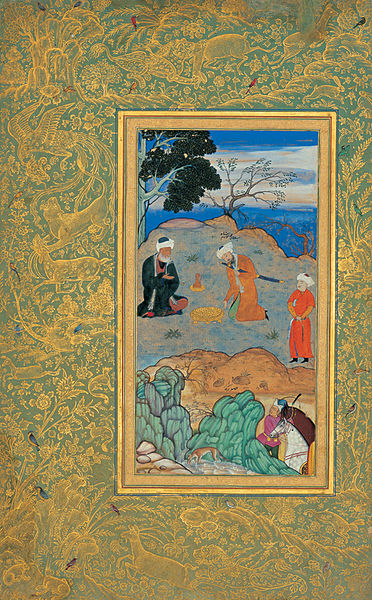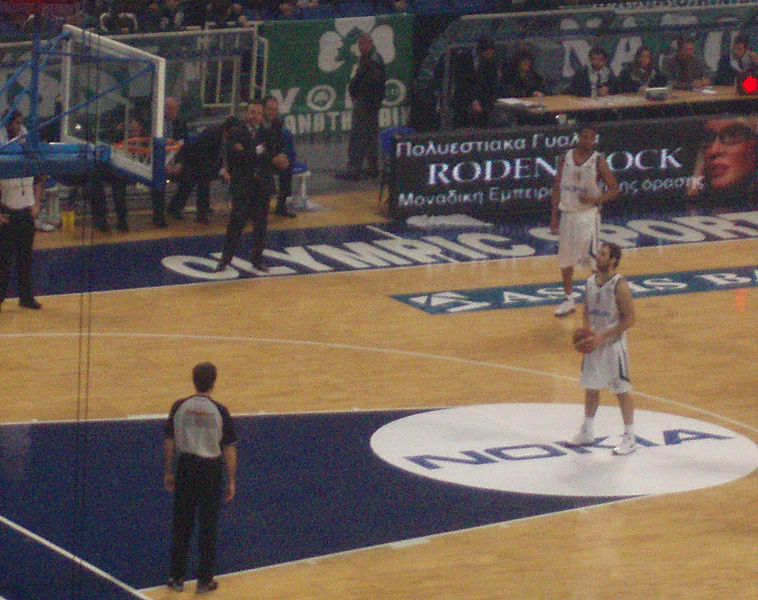When I moved to America, back in 2008, I often had occasion to walk past a basketball court in the park near where I lived. Up to that point my single experience of basketball was rather randomly winning a free throw competition in high school, back in London, and being solemnly beaten for the privilege. Winning such competitions, I painfully learned, was not for the bookish (and arrogant) likes of me.
One fine Californian day, a friend -- tall, of Estonian origin, and veteran of many a game of streetball -- kindly offered to introduce me to the art of basketball. The first thing I learned was that basketball was not football. It is not a game given to amateurs.
Compared to the bungling fluency with which I can kick a football, basketball seemed almost mechanical. While I managed to shoot, and imitate something like a dribble, the formulaic steps required of the lay-off reduced me to the level of a fumbling idiot. The game required a certain rigidity of movement, and I soon found myself daydreaming of the point I will no doubt never reach, when the rigidity disappears, and I will have internalised all the steps necessary to fly across the court, slamming baskets with aplomb.
After all of twenty minutes, my friend realized that I would not be providing him with a game, and (selfishly? generously?) suggested we try free throws instead. I complained that he would have a height advantage.
On the contrary, he explained, taller players actually shoot poor free throws, though their greater proximity to the net would suggest they should be better at making them. Why? I asked.
"More moving parts," he told me.
The free throw, he explained, was an exercise in reduction: you want everything to be the same, throw after throw -- the same hands, the same posture: the bigger you are, he claimed, the more your limbs, the sheer energy of your body, interferes with the throw.
Despite my height advantage, my friends hands bobbed up and down, shot after shot, as he roundly beat me in the free throw competition.
On my way home, however, cutting under the underpasses and listening to the traffic above, I couldn't help but think about the Platonic free thrower: a pair of hands attached to precise hydraulic machinery: gears and pistons that didn't hear the bated breaths of the crows, and were indifferent to the fact that there was a world waiting on this moment.
Neither size nor pressure would effect such a machine, and if the grace of the shot, ultimately, consists in its reliability, in making that shot time and again, wouldn't we say that our machine had grace?
The free throw reminded me of the miniaturists in Orhan Pamuk's My Name is Red.

Unlike modern pop singers, who are always supposedly new (and not only is their music derivative, but the very claim of novelty itself a repetition of every pop singer before them), the miniaturist does not strive for novelty, but for repetition.
Pamuk writes lovingly of his miniaturists, who draw the same objects with such passion, year after year, based on the examples of the masters of the trade, until they have memorized each stroke of the hand required to bring the painting forth. The eye, here, is a distraction: it can lead one to try to incorporate new elements of the world into a miniature, and not repeat the high art of past masters.
So it is, Pamuk writes (if I remember the novel correctly), that the miniaturist only finally reaches the highest stages of his art when, after many years in a cold and darkened room, he goes blind. Now he has but memory to rely upon, habits etched into the hands that guide him as he repeats, time and again, the work of painting.
Like taking a free throw, painting miniatures is a work of reduction. Both basketball player and miniaturist look back upon a bodily tradition, and a memory of practice, and each tries to free himself from the present: for the basketball player, it is the anxiety of the moment, but also those "other working parts" -- the heavy limbs and beating heart -- which constitute his prison, while for the miniaturist, it is the temptation to innovate, and the eyes that might lead one astray, that mean that the highest art of observation is practiced by those than cannot see.
[and so the Platonic form of miniature painting becomes: painting the miniature as one remembers it: not the thing in the world, the memory of the thing in the practice]
There, though, I think the miniaturist and the basketball player part company. What is remembered about the free throw is its efficacy: did it win the game or not?
[And if something else is remembered about the free throw, surely it is everything that interrupts its telos: an unnecessary swagger, Shaquille O'Neal's famed inability to take them].
I can imagine a robot free thrower, but not a robot miniaturist. For what actually happens when you attempt, faithfully, to re-present the past?
Novelty.
Here, the miniaturist and the pop singers stand as antonyms. The latter claims to always be new, but actually repeats the past: the history of new pop sensations is a succession of instants that lays no claim to history, even as each singers repeat those before (in their very claim to novelty, amongst other reasons). So each new sensation is described as new, without any comprehension of the degree to which she or he is simply a repetition created by a system that is structured by the necessary creation of novelty to sell more records.
The miniaturist, however, cannot repeat the past, despite his constant attention to it. He is trapped in a new moment, and in that moment, the past will unfold out in a new way. In Pamuk's novel -- again, if I remember correctly -- it is through turning to the past that the new emerges: through realizing everything that makes up our practice (as painters, as writers) that is the product of the world from which we emerge, being faithful to it, trying to emulate it, and stubbornly, unfortunately, creating the new, as we see that the old world, presented again today, cannot but encounter new forms, as it encounters the new problems of a living tradition.
Picture Credits: Free throw -- Vasilis Spanoulis about to take a free throw. 12 March 2008. (cc) From Wikipedia Commons. By Sportingn. Miniature -- Advice of the Ascetic, Moraqqa’-e Golshan, conserved in Golestan Palace, Tehran, Iran. First half of 16th century. (cc) Wikipedia Commons.
